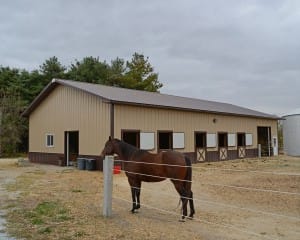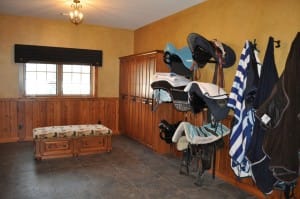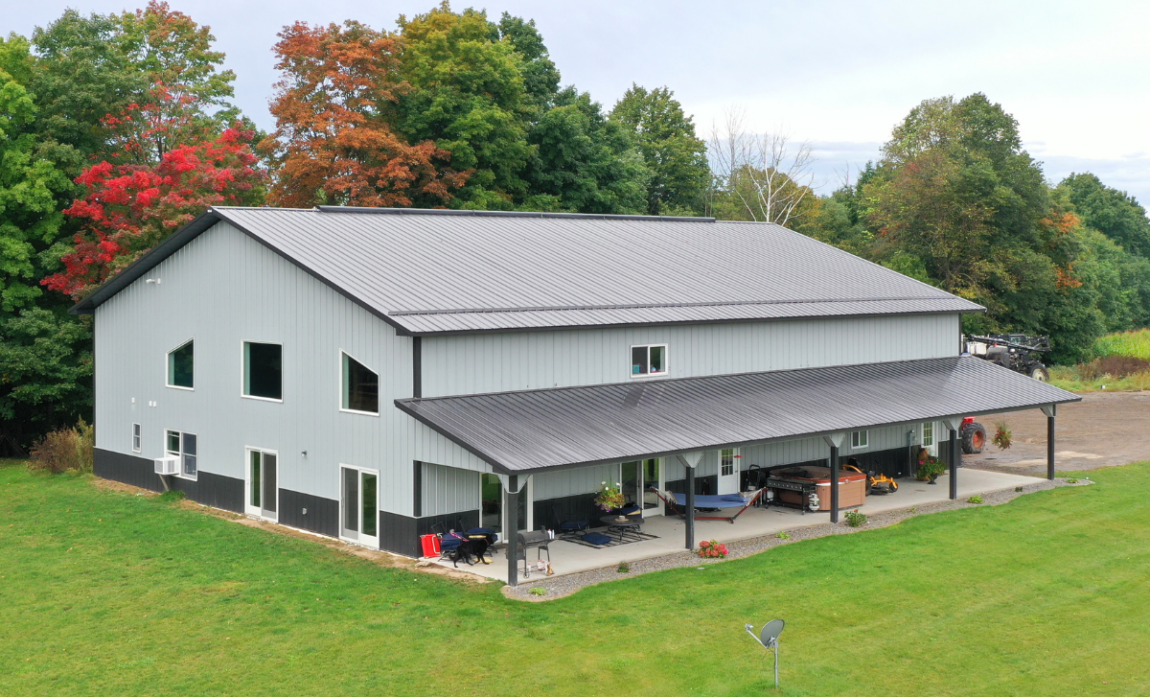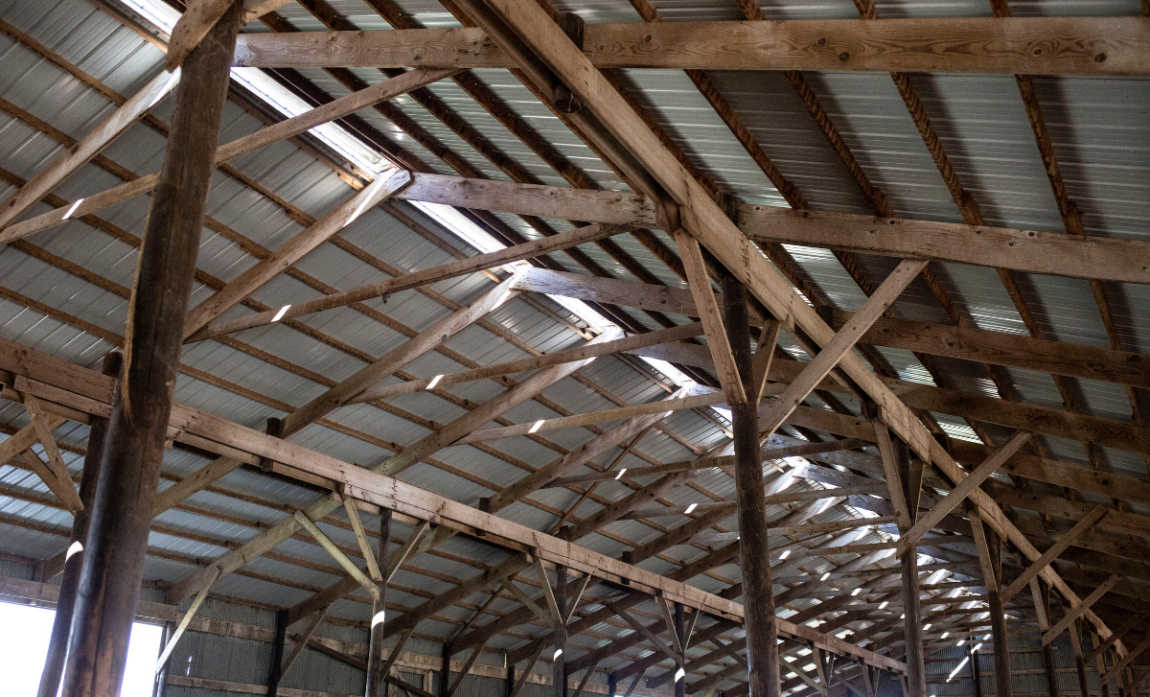Is your dream horse barn a two-stable structure in your yard? Or is it a large barn with an exquisite arena? Either way, there is a lot to consider before building. To make the planning process less overwhelming, we break down how to build a horse barn in seven easy steps.
As a horse enthusiast, you probably already know your dream horse barn would have a tack room near the cross-ties and a shower in the bathroom. But have you thought about building codes, how to best handle water runoff, or keeping your barn cool in the summer heat?
Constructing a horse barn involves a lot of pre-planning to ensure it lives up to your expectations. You need to be as specific as possible when articulating to your builder how you want your dream barn to look, feel and work.
We should mention it is imperative to hire a reputable builder to help execute your project. It will be difficult to find solutions to all potential problems without their expertise.
Follow these seven essential steps to plan your ultimate dream barn. That way, you won’t be left frustrated and buried in unnecessary expenses fixing something that, with a little pre-planning, you could have easily avoided.
1. Write down big picture thoughts. Close your eyes and imagine driving onto your dream farm. What do you see? Is it a breeding farm with two stallions and a mare? Or is it a family farm, housing not only horses, but goats, chickens and pigs, too?
Write down this visualization as if you were describing it to a friend. Be specific. Your idea of a family farm may differ from your builder’s, who instead may think it includes a riding ring and a picnic table.
2. Think in terms of “systems” and movement. Something or someone is always moving on a horse farm. For this second planning stage, list all of the things that would be in motion on your farm.
This may seem like a bizarre step, but it will help you develop ideas for the exact features you need later. Here are some examples:
-Horses leaving and entering stalls
-Owners tacking up, tying up and riding horses
-Owners, vets, clients and guests entering and exiting the office, tack room, stalls, and how their vehicles move and park around the horse facility
-Workers pushing wheelbarrows and hauling muck buckets in and out of the barn
-Tractors hauling hay, plowing snow, scraping driveway
-Riders loading trailers for horse shows
-Garbage truck lifting dumpster
-Kids playing or biking in the barn area
-Owners making late-night checks on the barn
-Dogs running around
3. Consider how you might expand. When planning a horse barn, the key is to think expansively.
Sure, you may have two horses now, but what about in five years? Will you have changed riding disciplines? Will you wish you had planned a space for that covered riding arena? Will that future riding arena be attached to your stall barn or separate?
Thinking this through with an expert will save you money in the long run. Perhaps instead of adding it on later, your builder will know how to most cost-effectively engineer your barn to accommodate all of your current and future needs.
4. Deal with legal issues up-front. Permits, environmental concerns, zoning… depending on where you live there may be a lot of red tape to wade through before you can build. This is probably the least fun part of the process. Consult your builder to ensure your barn complies with the law.
If you’re not careful, neighborly disputes can escalate into legal issues. Think about ways to avoid inconveniencing those living nearby.
5. Select the right site. This step is more complicated than you think. However, your builder will understand “the lay of the land” quite literally. It includes considering:
-Drainage. Land that seems flat might actually not be flat, and only a trained eye can notice this. It could have a slant, which could affect drainage.
Also, if your land slopes towards your building site, you could deal with unwanted water woes for years.
-Weather. Take wind, weather and accessibility into account. For instance, will your vehicle be able to make it up that hill to your barn if it is slick from rain or ice?
-Utilities. Do not forget about water availability, cell phone coverage and internet access. Address issues like power poles or underground utilities that could prevent any of these from functioning properly.
-Space. Recognize that staging areas (for construction) require more space than you may think. Pick a large plot of land. It is better to be safe than sorry.
Remember, the key here is to not fight nature, but to instead work with it. Talk to your builder about selecting the right site for your horse barn. It is important not to overlook any important details, as this can cost you down the line.
6. Pick the right size, shape and accessories. Now for the fun part! This is the design stage. Time to pick stalls, doors and other fun extras for your dream barn.
With endless options, here are some tips to help narrow down what is right for you.
-Envision your daily routine. This is the best way to determine exactly what you need. Are you feeding hay and grain from a wheelbarrow or the back of a utility vehicle? How will you clean up manure in the barn?
Knowing your routine will help you determine the size of your doors, the arrangement of your stalls, storage areas and work areas, and other important features for your barn.
-Think about your horses. Does your horse like to stick its head out of its stall? Will you be moving two horses down your aisle at once? These answers are especially important when choosing stall doors and deciding the size of your aisles.
-Incorporate little luxuries. Do you want an on-demand water heater? Built-in cabinets? A private office or a space to eat lunch away from the barn dust? Now is the time to make your dreams a reality.
-Plan ahead. It may be a smart idea to plan what you might want to add later on, even if you don’t have the money right now. This will help the builder construct your barn to effectively retrofit these additions.
7. Visit other barns. It is a good idea to visit barns similar to the one you planned out with these steps.
Record what you liked about them, and what you’d like to change. What’s your overall impression? Decide what you can and can’t live without.
Because the pre-planning process of building your dream barn heavily depends upon personal preference and budget, it is crucial to hire an experienced barn builder to help you navigate the waters.
Taking the plunge without one may lead to complications that will compromise not only your finances, but the entire vision for your dream barn.








